The late 19th century was a productive era in firearm design. The fertile mind of John Moses Browning was beginning to show its genius. In the autumn of 1890, in the big sky country of Ogden, Utah, one of John Browning’s early concepts took shape. The following is a letter to Colt’s Patent Firearms Company from Matthew S. Browning, dated Nov. 22, 1890:
Dear Sirs:
We have just completed our new automatic machine gun & thought we would write to you to see if you are interested in that kind of a gun. We have been at work on this gun for some time & have got it in good shape. We made a small one first which shot a 44 WCF charge at the rate of about 16 times per second & weight about 8#. The one we have just completed shoots the 45 Gov’t charge about 6 times per second & with the mount weighs about 40#. It is entirely automatic & can be made as cheaply as a common sporting rifle. If you are interested in this kind of gun we would be pleased to show you what it is & how it works as we are intending to take it down your way before long. Kindly let us hear from you in relation to it at once.
Yours Very Truly,
Browning Bros.
2461 Washington Avenue
Ogden, Utah
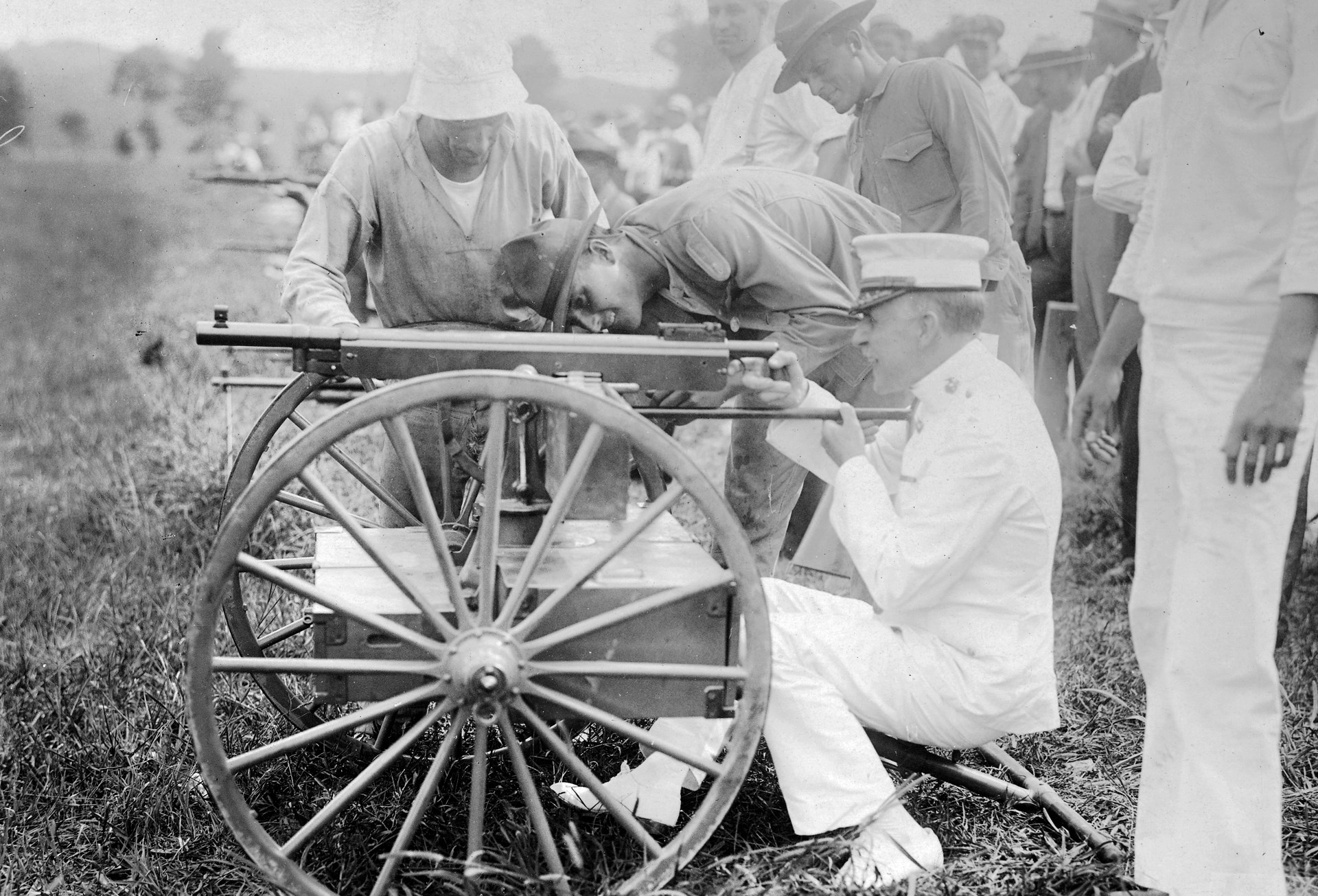
General Barnett tests “Colt’s Automatic Gun” at the Winthrop, Md., range during 1917. Library of Congress photo.
A Hot Potato Digger
Colt’s sales literature
claimed that the hammer supposedly “pumped cool air” into the chamber.
Regardless, the M1895 was widely noted to heat up quickly after only a
medium-length burst—making it hazardous to leave a live round in the
chamber. The chamber needed to be unloaded after almost any sizeable
burst, unless the gun was going to remain in continuous action. The
heavy barrel was supposed to provide adequate cooling for sustained
firing but was ultimately not up to the task. Another drawback was that
the M1895 could not be fired from the prone position, as the forward and
backward swinging of the gas-actuated loading lever prevented this. The
“Potato Digger’s” action demanded a tripod.
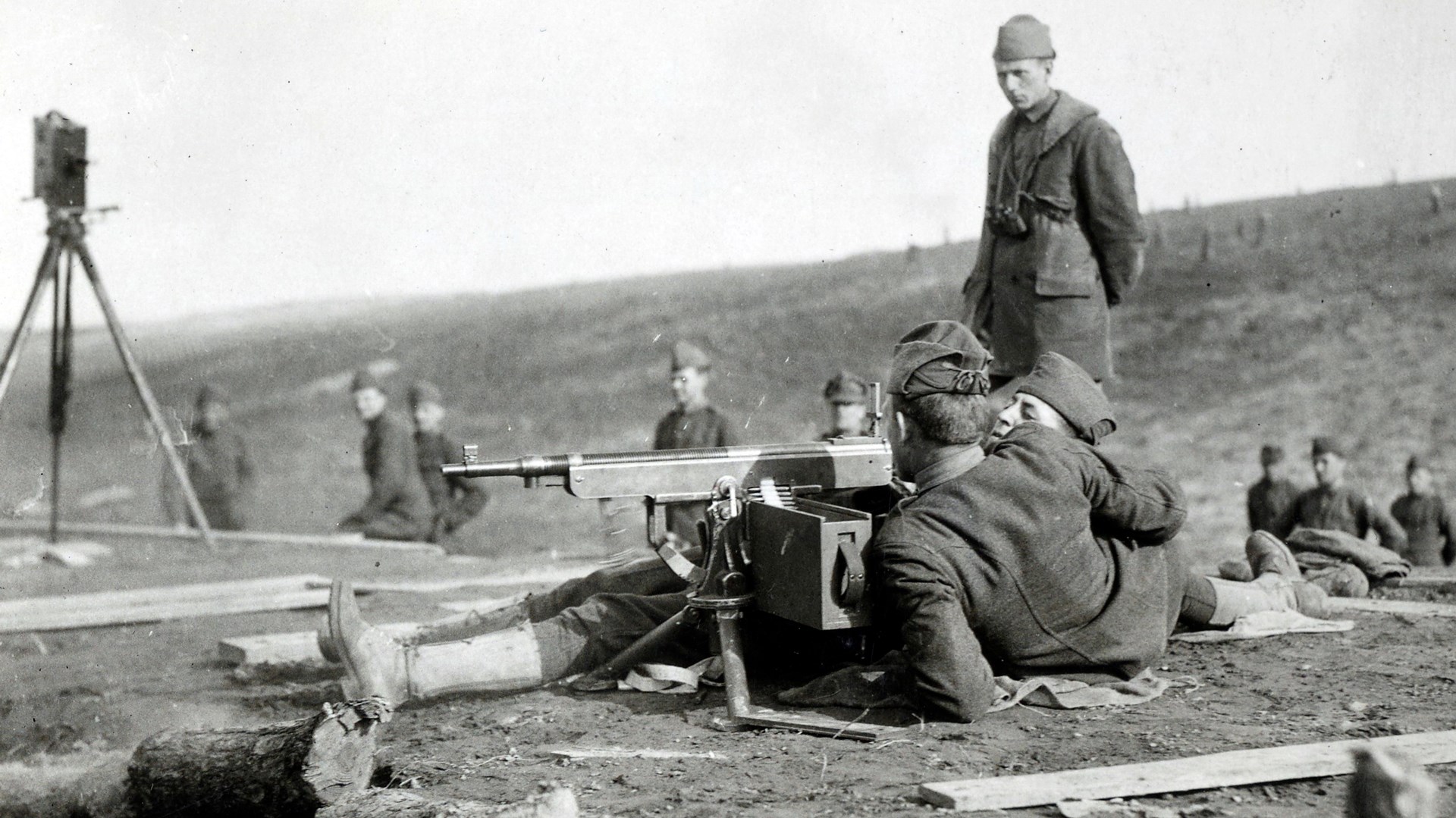 M1895 gunners train at Camp Upton, N.Y. on Long Island during early 1918. National Archives photograph.
M1895 gunners train at Camp Upton, N.Y. on Long Island during early 1918. National Archives photograph.
U.S. Army Pushback
Not everyone was impressed
with the new “automatic machine gun” designs that began to appear in the
1890s. There were, of course, those who saw the tremendous firepower
potential in these new arms. Unfortunately for John Browning, and for
Colt, the manufacturer of his automatic gun, the U.S. Army was quite
pleased with its batteries of hand-cranked Gatling guns. Military
interest in Browning’s new firearm was quite limited, with some
considering it something of a newfangled “fad.” Meanwhile, the Browning
gun found some interest from the U.S. Navy, and an order for about 200
examples, chambered in 6 mm Lee Navy followed.
While the U.S. Navy embraced machine guns before the turn of the 20th
century, the U.S. Army was still committed to the Gatling Gun and
remained so for nearly another decade. The Army tested many early
machine-gun designs, and the Colt gun was regularly in the mix. The Army
Ordnance Board reviewed the firearm in June 1895 and wrote: “The
Colt automatic gun is an ingenious, compact, and relatively light arm.
Its continuous automatic firing depends upon the action of the
ammunition used. It is easily pointed by hand, and its fire is
completely under the operator’s control. Its rapidity of fire during the
tests was about 100 rounds in 17 seconds.”
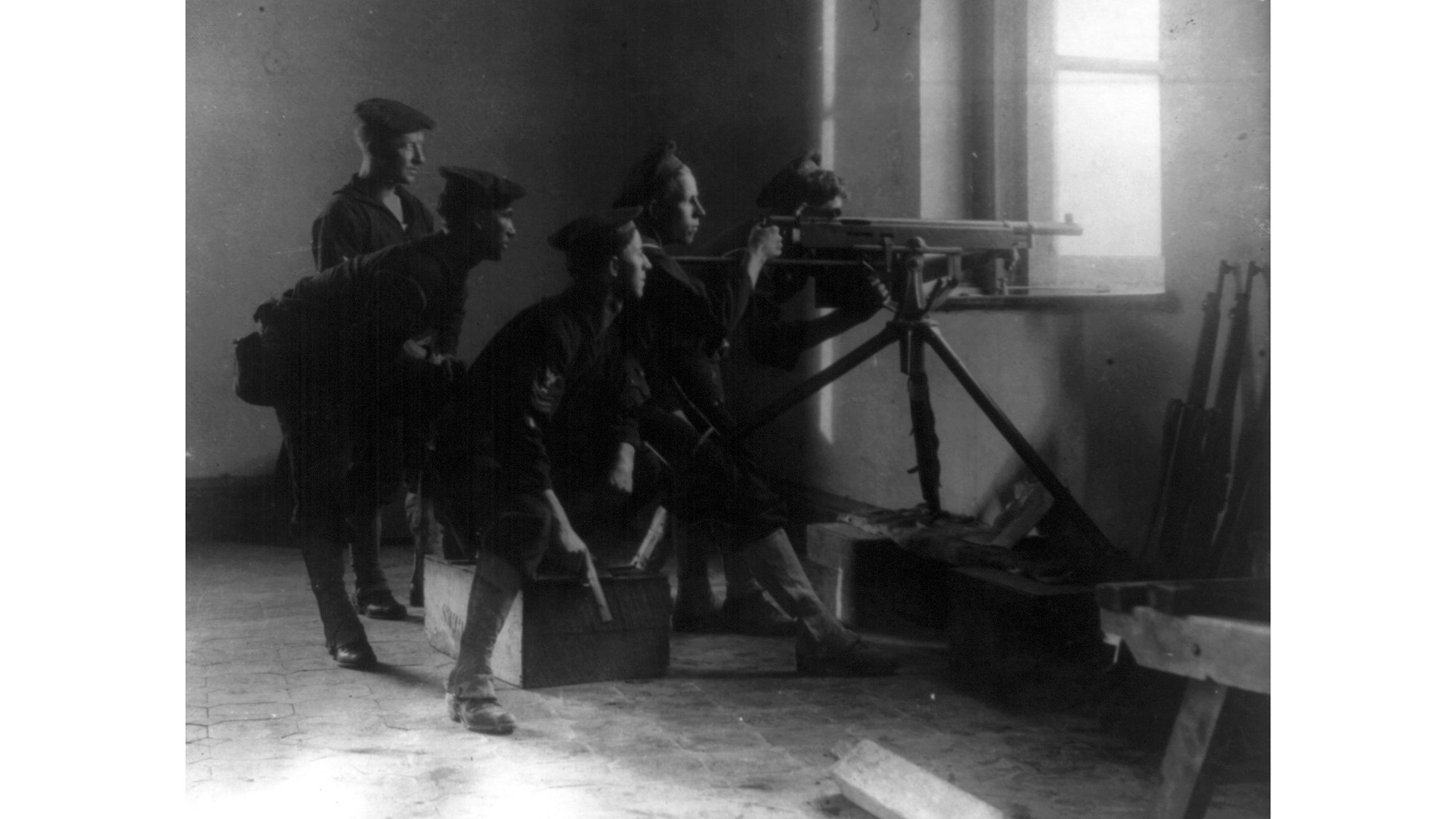
U.S. Navy Bluejackets ashore manning a M1895 (6 mm Lee Navy) during the occupation of Veracruz, Mexico during April 1914. National Archives photograph.
However, the board concluded: “The board is of the opinion that in its present form, as shown by the tests made this arm is not suitable for ordinary service and has no place in the land armament.”
Born In Navy Service
While the Navy first used
the Colt machine gun in combat in Cuba during 1898, it was the Army that
gave the M1895 machine gun its designation. Even so, there is no record
that the Colt-Browning gun was never officially adopted by the U.S.
Army. Two Colt M1895 guns (in 7x57 mm Mauser) were privately purchased
by Lt. Col. Roosevelt’s “Rough Riders,”
a volunteer cavalry regiment. Roosevelt was not impressed, calling the
Colt machine guns “delicate and readily out of order.” Navy Colt MGs
received good marks during their use in Cuba during 1898, and later in
the Philippines. They proved their worth yet again during the Marine
Corps’ defense of the International Legation compound in Peking during
the Boxer Rebellion of 1900. South of the border, Colt MGs in 7 mm Mauser were used in the Mexican Revolution, and the U.S. Navy’s Colt guns were brought ashore for the occupation of Veracruz in April 1914.
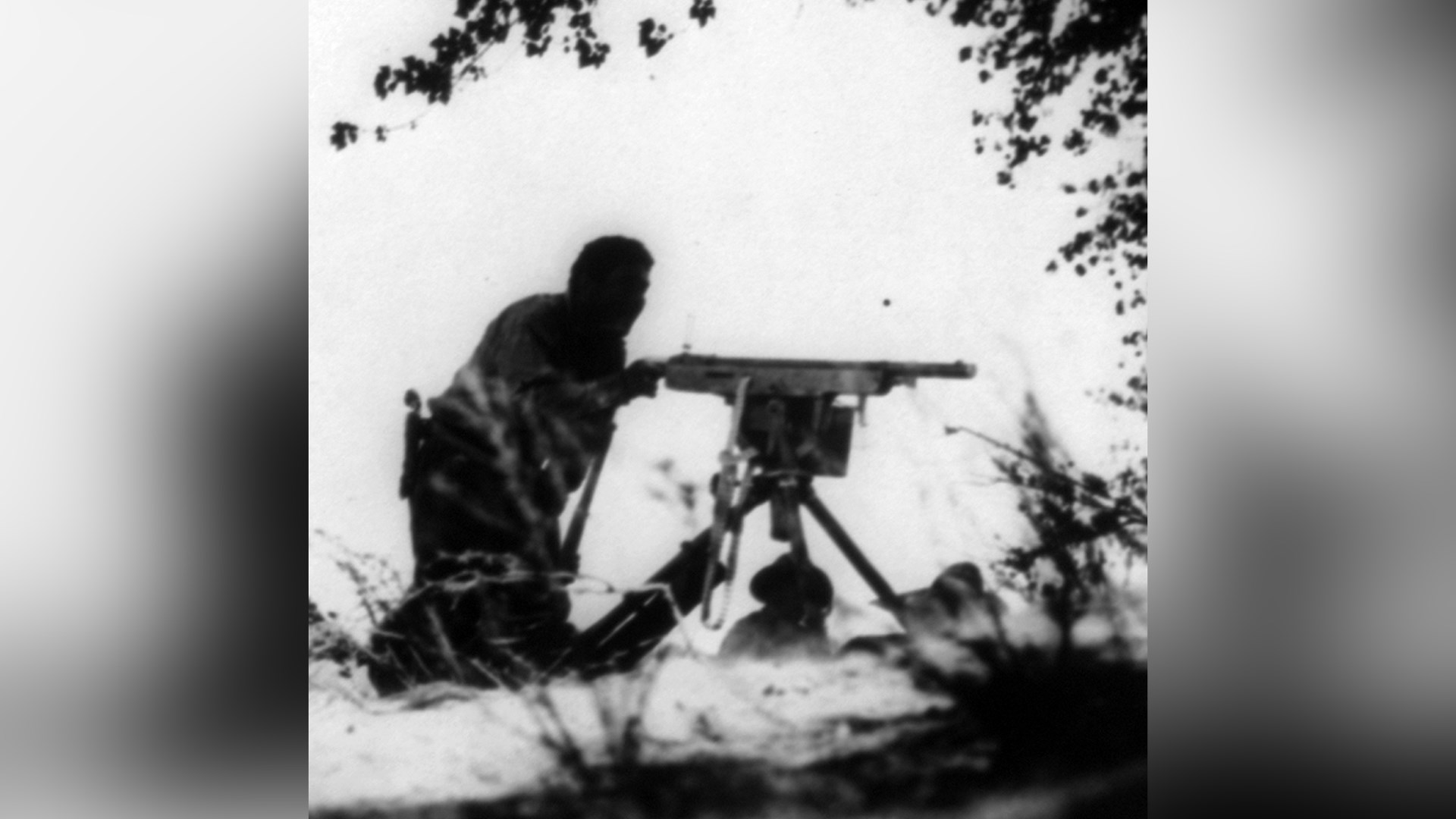 M1895
machine gun used by Mexican revolutionaries. Pancho Villa’s “Division
of the North” is thought to have acquired at least two of these guns.
M1895
machine gun used by Mexican revolutionaries. Pancho Villa’s “Division
of the North” is thought to have acquired at least two of these guns.
Canadian troops successfully used Colt machine guns (chambered in .303 British) during the Second Boer War during 1900. The Canadians retained their M1895s through the early days of World War I, using them in combat until they acquired Vickers machine guns.
The first 200 U.S. Navy guns (called the Mark I), originally acquired in 6 mm Lee Navy, were ultimately rechambered in the newly unified Army-Navy .30-40 Krag (renamed the Mark I Modification I). When the official U.S. service ammunition was changed to the .30-’06 Sprg., the Navy once again rechambered their Colt machine guns but strangely retained the Mark I Mod I nomenclature.
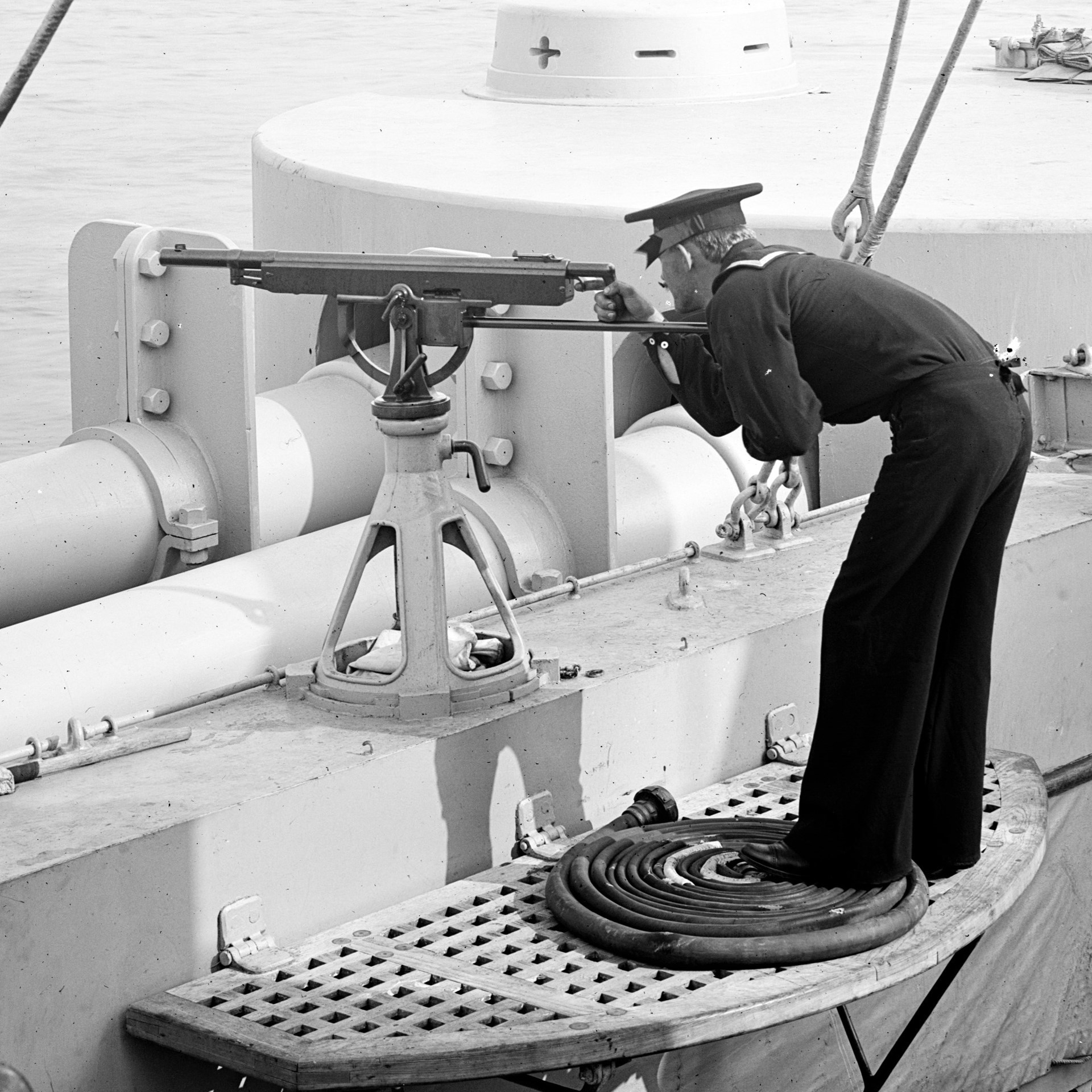 An
M1895 pedestal-mounted aboard the pre-dreadnought battleship U.S.S.
Iowa (BB-4), launched in March 1896. Four M1895 machine guns were listed
as part of the ship’s armament. Library of Congress photo.
An
M1895 pedestal-mounted aboard the pre-dreadnought battleship U.S.S.
Iowa (BB-4), launched in March 1896. Four M1895 machine guns were listed
as part of the ship’s armament. Library of Congress photo.
Almost The Final Straw
The U.S. Army
continued to look at machine gun designs, but with an increasingly
critical eye. The 1904 Report of the U.S. Chief of Ordnance describes
the in-depth and rigorous testing of the M1895 machine gun versus the Maxim-Vickers machine gun. The following comments come from the “Test of automatic machine guns:”
During marching tests several of the ammunition boxes provided with the Colt gun came apart or broke. They are entirely too fragile to withstand service conditions. During the marching tests many cartridges worked loose, and a number worked out of the belts provided with the Colt gun, showing conclusively their unsuitability for service.
The two guns appear to be equally accurate at 500 and 1000 yards. The mount of the Colt was less stable, requiring more frequent adjustments of aim. The endurance of the Vickers gun, when its jacket is kept filled with water, is greatly superior to that of the Colt. The time required to insert a belt in either of these guns and to load it is about 10 seconds.
The radiation of heat from the Colt barrel seriously interferes with sighting after a few hundred rounds are fired from it. After 500 to 1000 rounds are fired continuously from the Colt gun, the heat remaining in the barrel is sufficient to ignite a cartridge in the chamber. The gas lever handle on the Colt gun also becomes so heated as to burn the hands, and as this lever must be operated to insert each belt, this is a serious defect. After firing about 500 rounds the Colt gun becomes so hot that it can only be handled with great difficulty.
After the 1904 tests, and the overall negative opinion of the firearm by the board, it appeared that the Colt M1895 had reached a dead end with the U.S. Army.
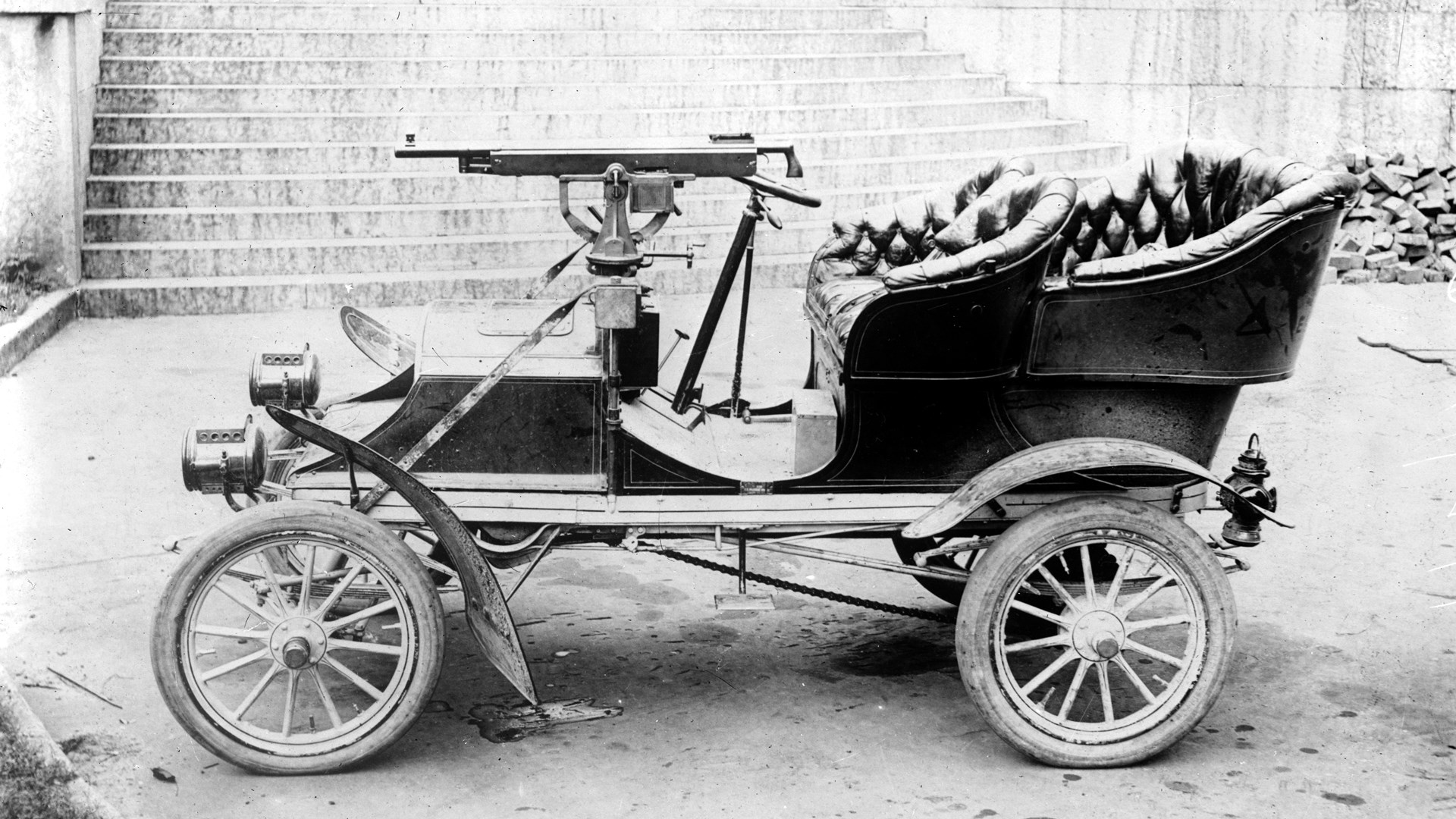 Apparently
“road rage” is not a modern concept. This M1895 is seen mounted aboard a
Model T Ford. Library of Congress photograph.
Apparently
“road rage” is not a modern concept. This M1895 is seen mounted aboard a
Model T Ford. Library of Congress photograph.
Resurrection In The Great War
As World War I
began in August 1914, some of the European powers found themselves in
need of machine guns. The Russian Empire purchased nearly 15,000
(chambered in 7.62x54 mm R),
first from Colt, then from Marlin-Rockwell, which purchased the
manufacturing rights and the factory machinery in 1916.
The Italians purchased M1895s (chambered in 6.5x52 mm Mannlicher-Carcano) and used them in combat against the Austro-Hungarian Empire. The Belgian Army inherited the Canadians’ Colt guns (.303 British) and purchased new guns chambered for 7 mm Mauser.
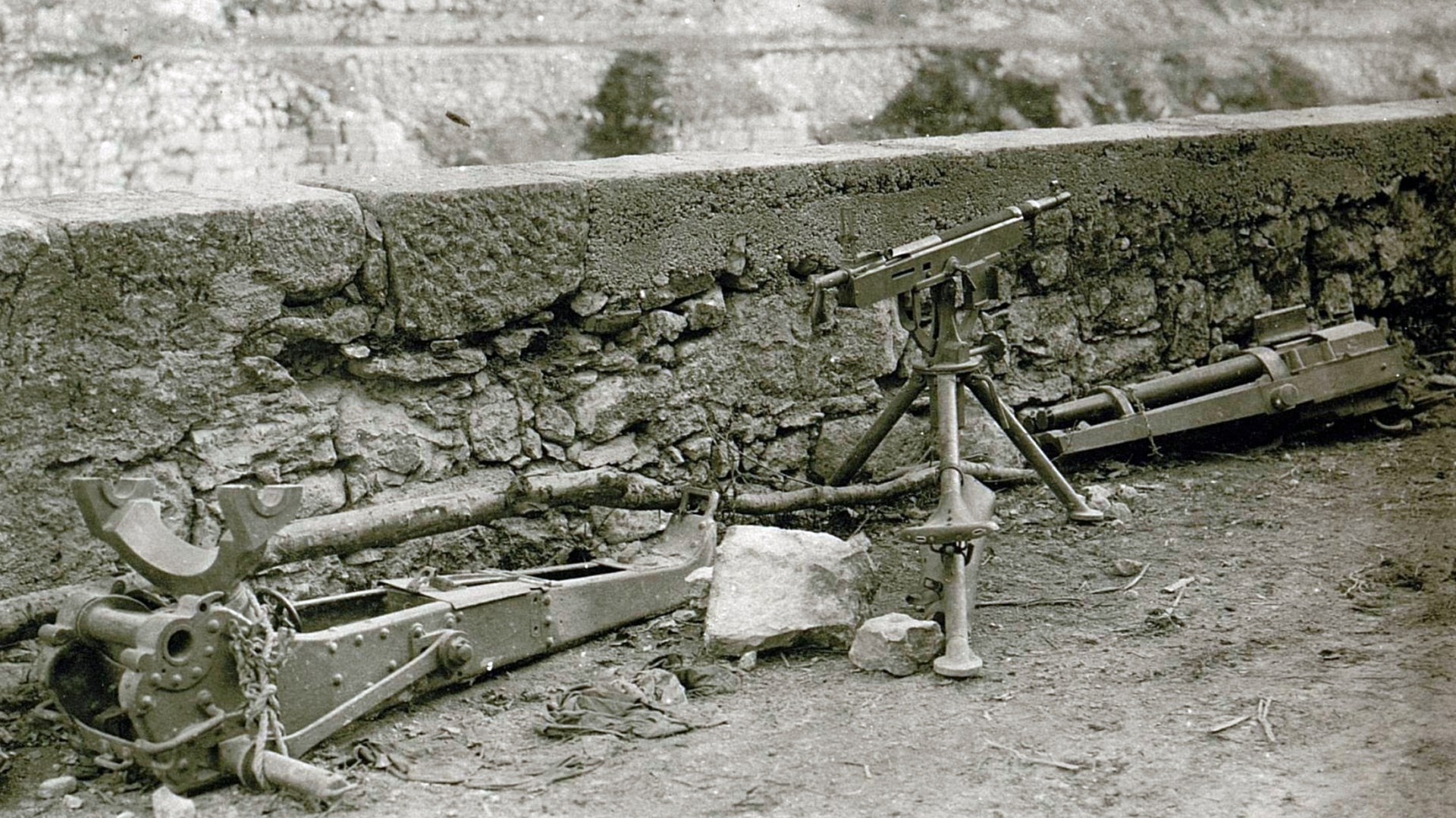 Italian M1895 machine gun captured by the Austrians during World War I. Photograph from author’s collection.
Italian M1895 machine gun captured by the Austrians during World War I. Photograph from author’s collection.
In America, the M1895 was already considered obsolete, but U.S. forces had so few machine guns that 1,500 additional M1895s were built for the Army. These proved useful in training America’s fledgling army in several roles, ranging from infantry units to aerial gunners. Some were mounted aboard U.S. Navy “sub-chasers” protecting Allied convoys from U-boats. Beginning in 1917, Marlin-Rockwell redesigned the M1895, replacing the “potato-digger” arm with a linear gas piston to produce the Marlin Aircraft Model 1918. The Marlin Aircraft machine gun was a synchronized firearm that was mounted on a few U.S. Air Service pursuit and recon aircraft in the fall of 1918. Pilots praised it for its reliability and high rate of fire—ultimately the U.S. Air Service judged it to be the equal of the Vickers aircraft gun. After WWI, the Marlin gun was also mounted in the first American-made tank, the M1917 (the US version of the French FT-17).
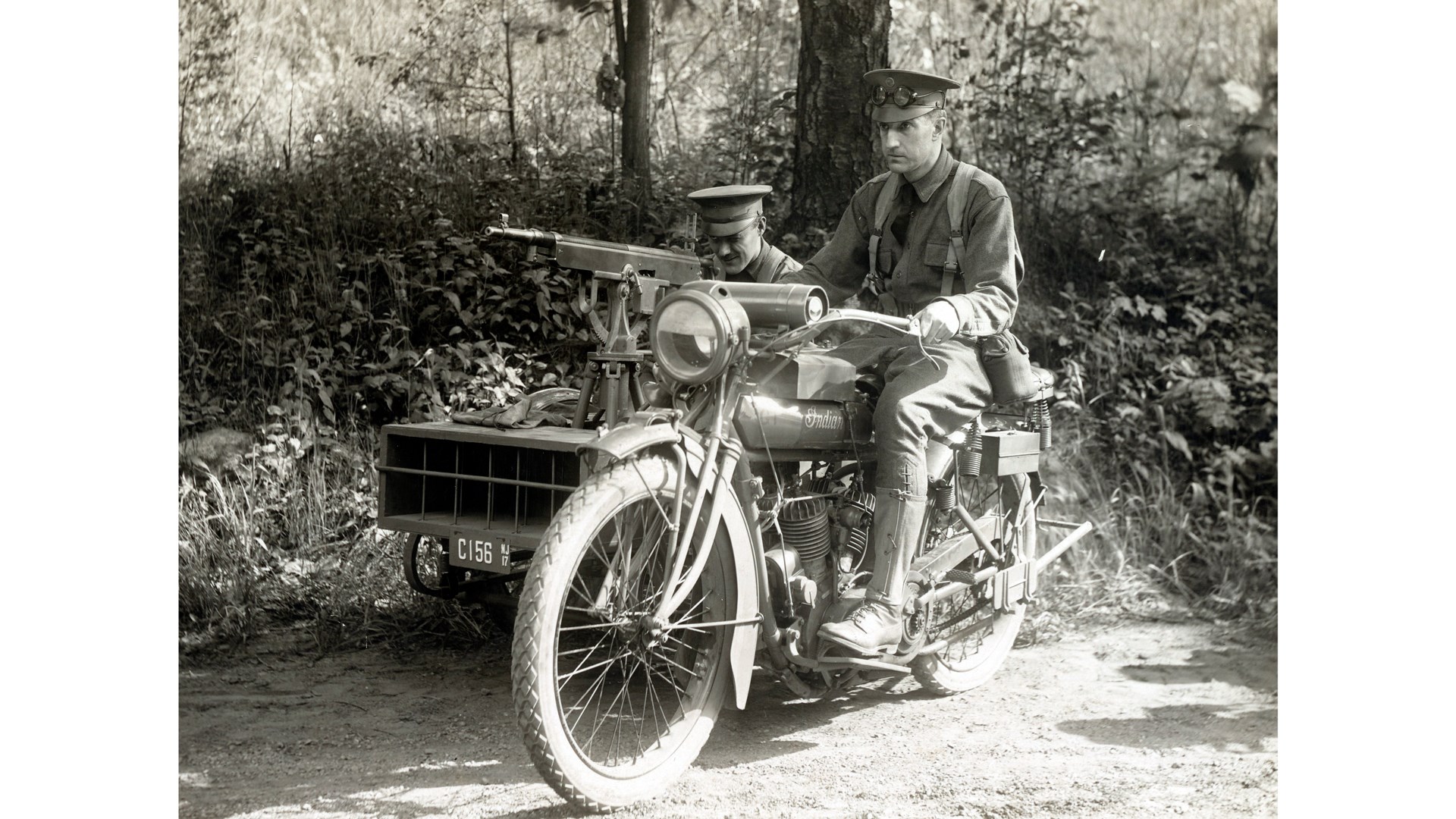 A
firearm for a new century of mobile firepower: The M1895 machine gun
was often mounted on early motorcycle/sidecar combinations. This is the
New Jersey Mobile Battery during 1917. National Archives photograph.
A
firearm for a new century of mobile firepower: The M1895 machine gun
was often mounted on early motorcycle/sidecar combinations. This is the
New Jersey Mobile Battery during 1917. National Archives photograph.
Soldiering On
Even though World War I was ostensibly ended by the November 1918 armistice,
the fighting only intensified throughout Eastern Europe. The many
M1895s purchased by the Russian Empire, continued their deadly work in
the hands of Red and White forces
in the Russian Civil War. Once the communists had seized control of
Russia, the M1895 continued to fire shots in anger and saw action on
both sides in the Ukrainian War of Independence (1917-1921) and the
Soviet-Polish War (1919-1921), as well as the Finnish Civil War (1918),
the Estonian War of Independence (1918-1920) and the Latvian War of
Independence (1918-1920).
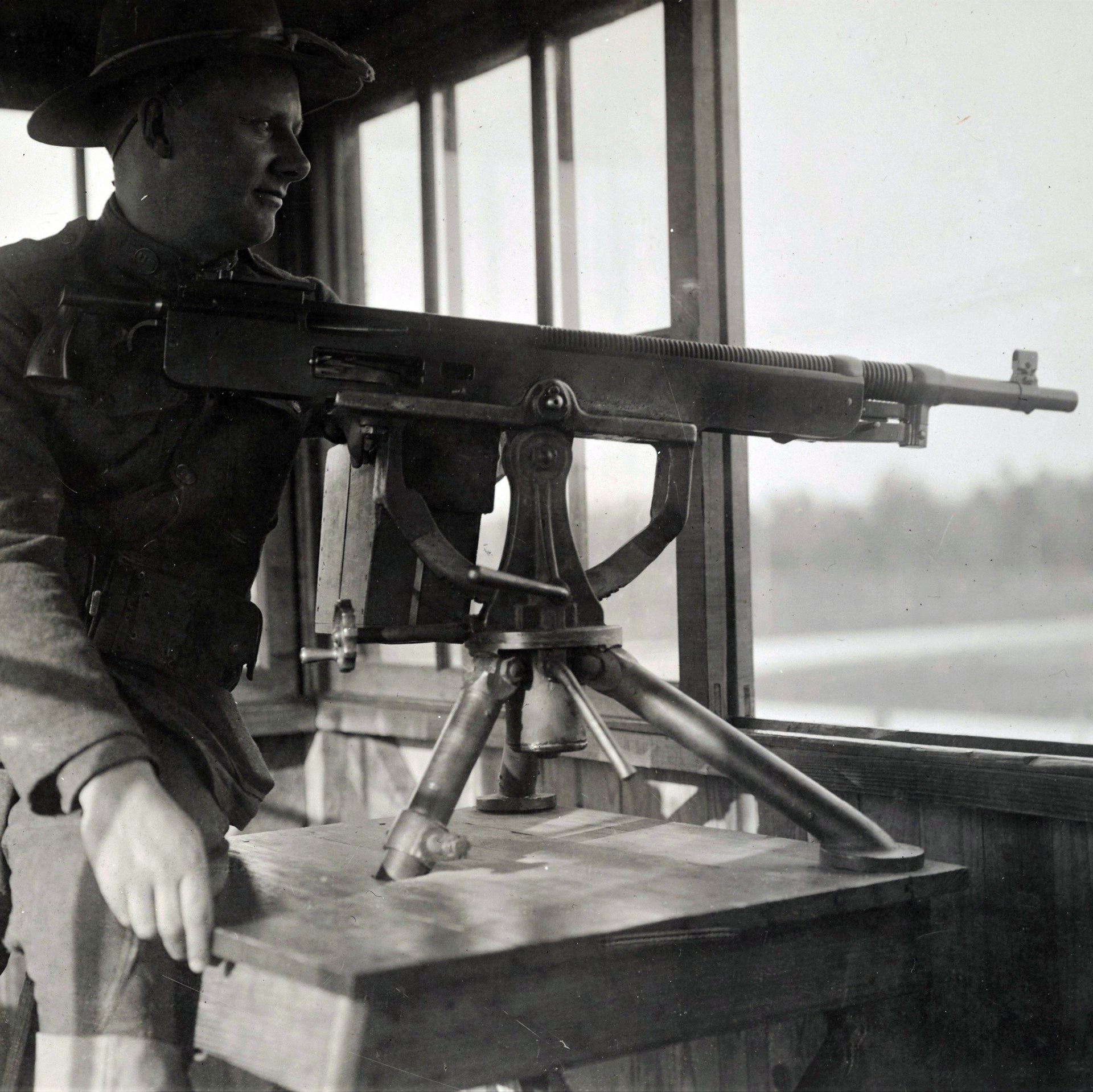 On guard at Fort Oglethorpe Prison, Ga., early 1919. National Archives photograph.
On guard at Fort Oglethorpe Prison, Ga., early 1919. National Archives photograph.
Back in the U.S., the M1895s appeared in the second largest armed insurrection in American history, firing shots in the West Virginia “Coal Mine War” (1921). The Colt machine guns were owned by the coal companies and used by the strike-breaking Baldwin-Felts agents.
A small amount of M1895s (7 mm Mauser) were used in the Spanish Civil War (1936-39), and when England stood alone in 1940 and was desperate for arms, M1895s were purchased for the British Home Guard, which used them during World War II.
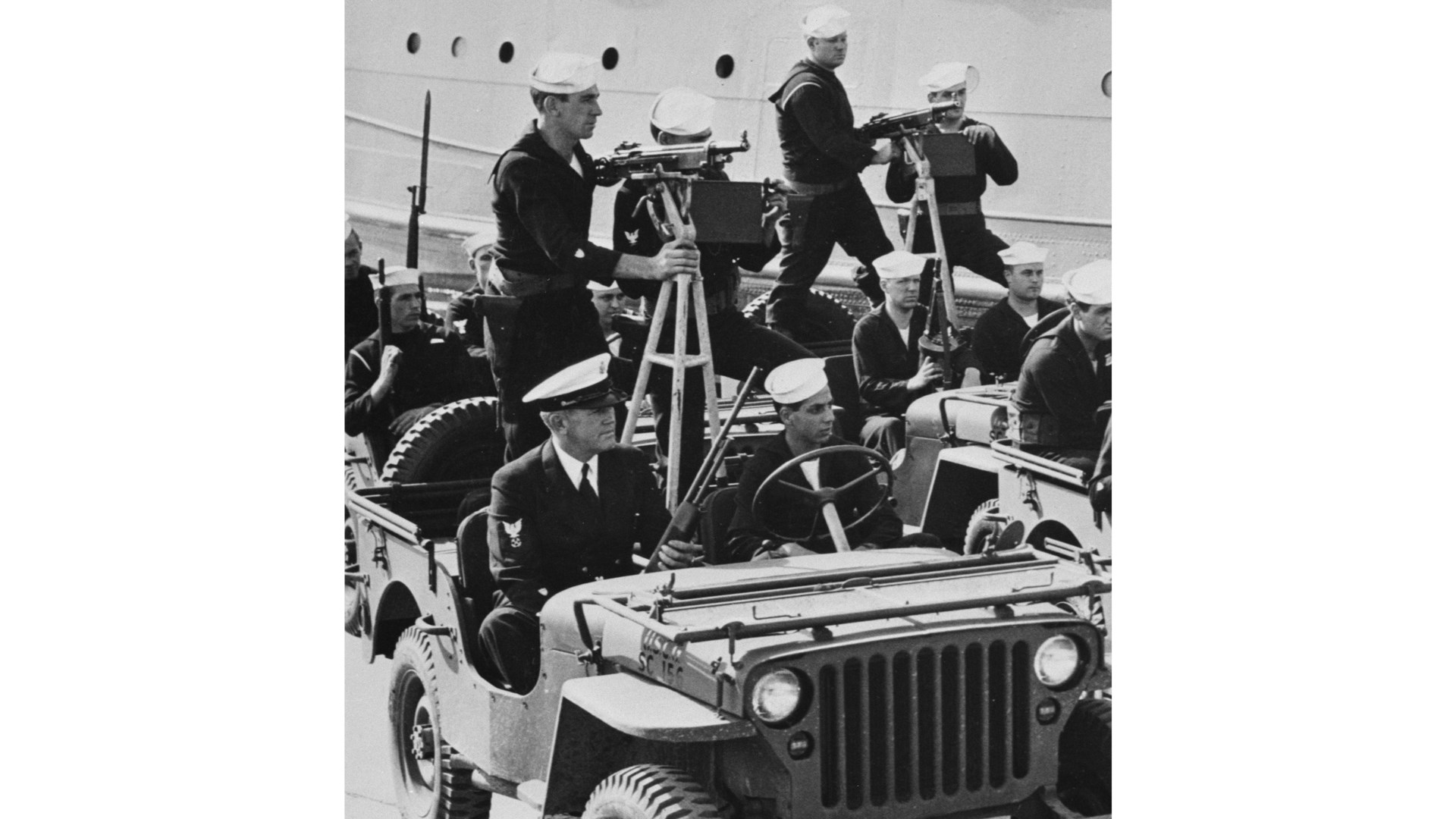 Service
in World War II: M1895 guns mounted aboard U.S. Coast Guard Jeeps for
stateside shore patrol during 1943. National Archives photograph.
Service
in World War II: M1895 guns mounted aboard U.S. Coast Guard Jeeps for
stateside shore patrol during 1943. National Archives photograph.
Surprisingly, a few Jeep-mounted M1895s appear in photos of stateside U.S. Coast Guard shore patrols during WWII. The old potato-digger fought on longer and in more conflicts than its maker ever expected. John Browning’s first machine gun set the stage for his later genius designs that would serve America through two world wars and beyond.
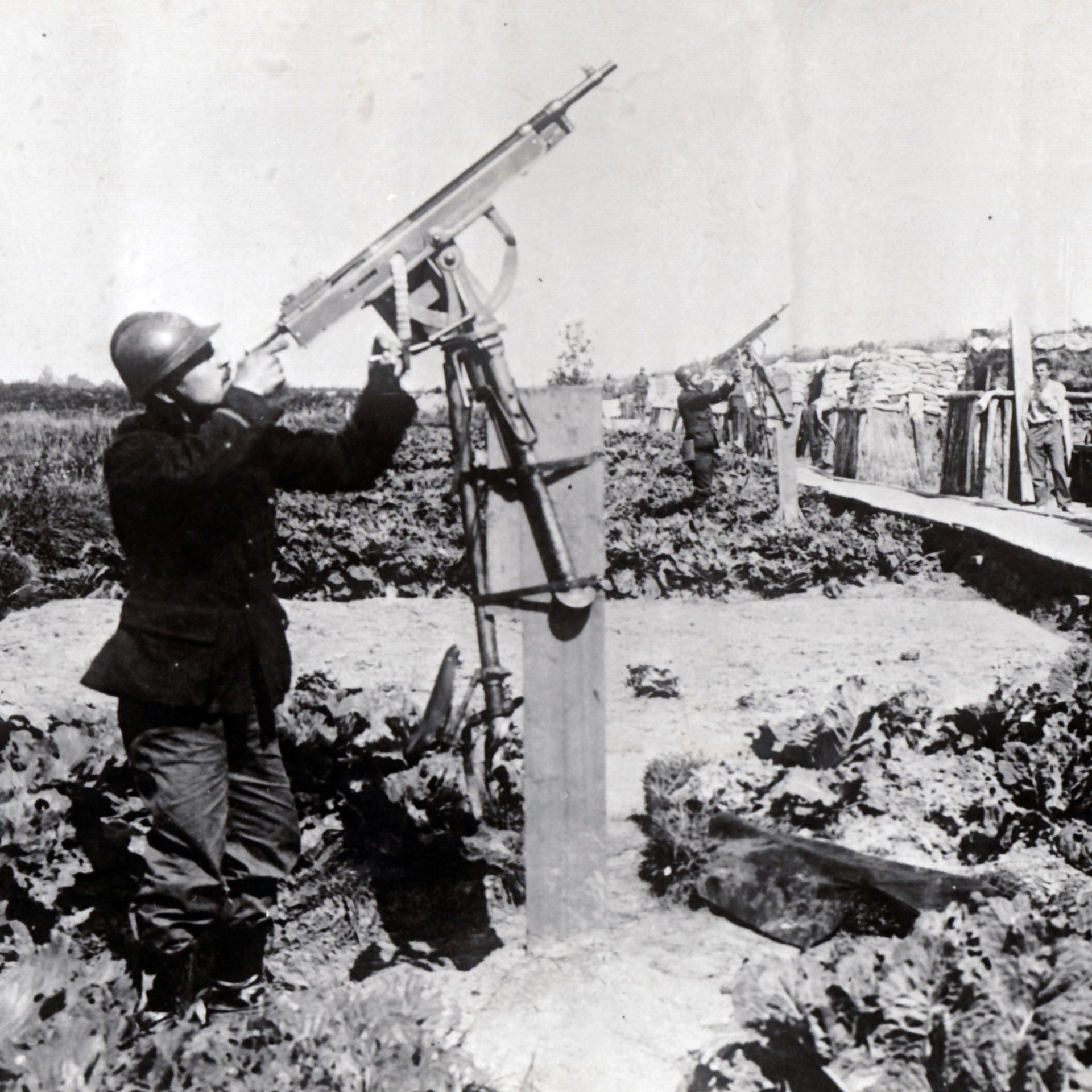 Belgian M1895 guns set up to provide anti-aircraft defense on the Western Front. National Archives photograph.
Belgian M1895 guns set up to provide anti-aircraft defense on the Western Front. National Archives photograph.
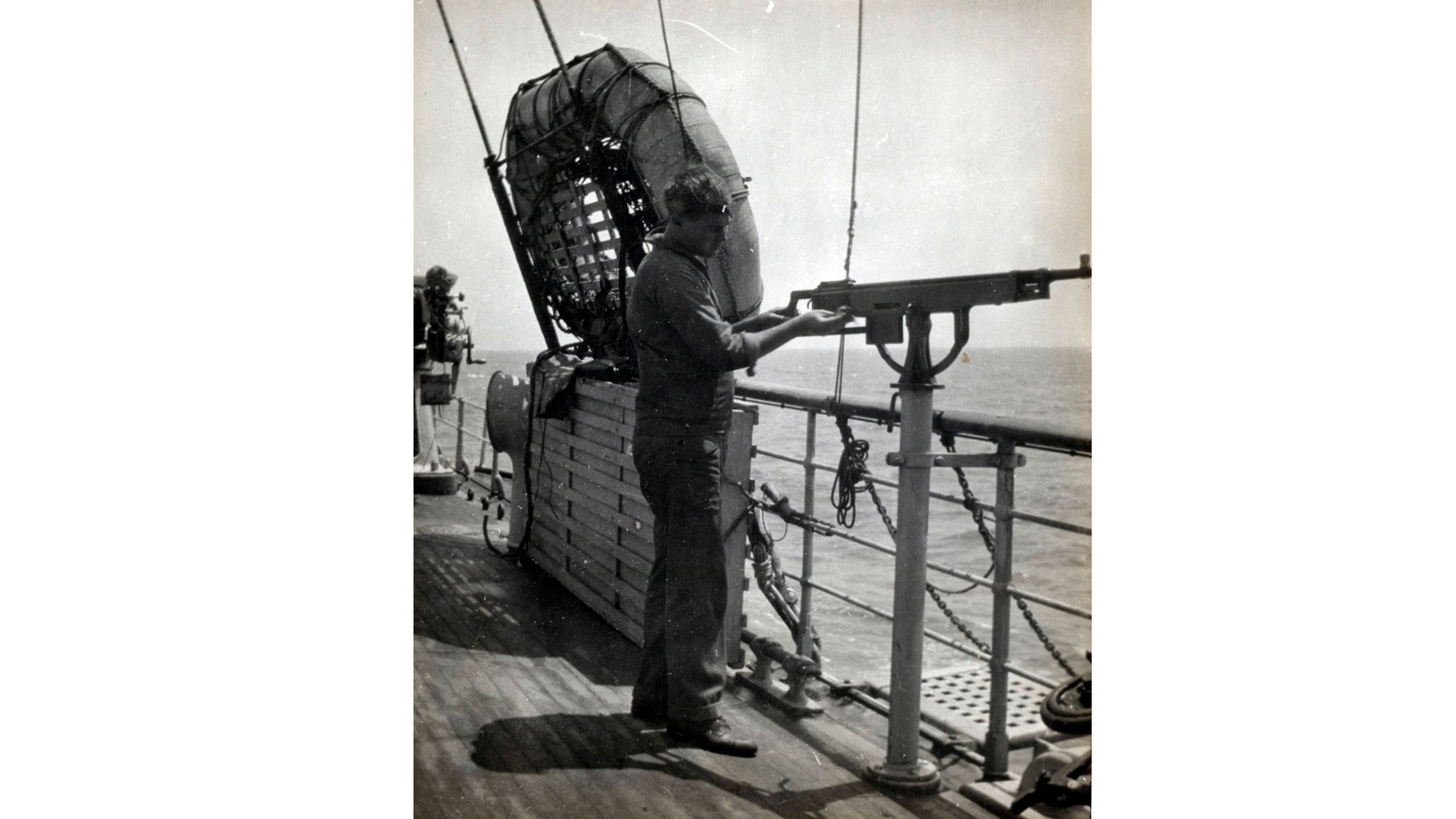 A M1895 in Coast Guard service aboard a converted yacht on anti-submarine patrol during 1918. National Archives photograph.
A M1895 in Coast Guard service aboard a converted yacht on anti-submarine patrol during 1918. National Archives photograph.
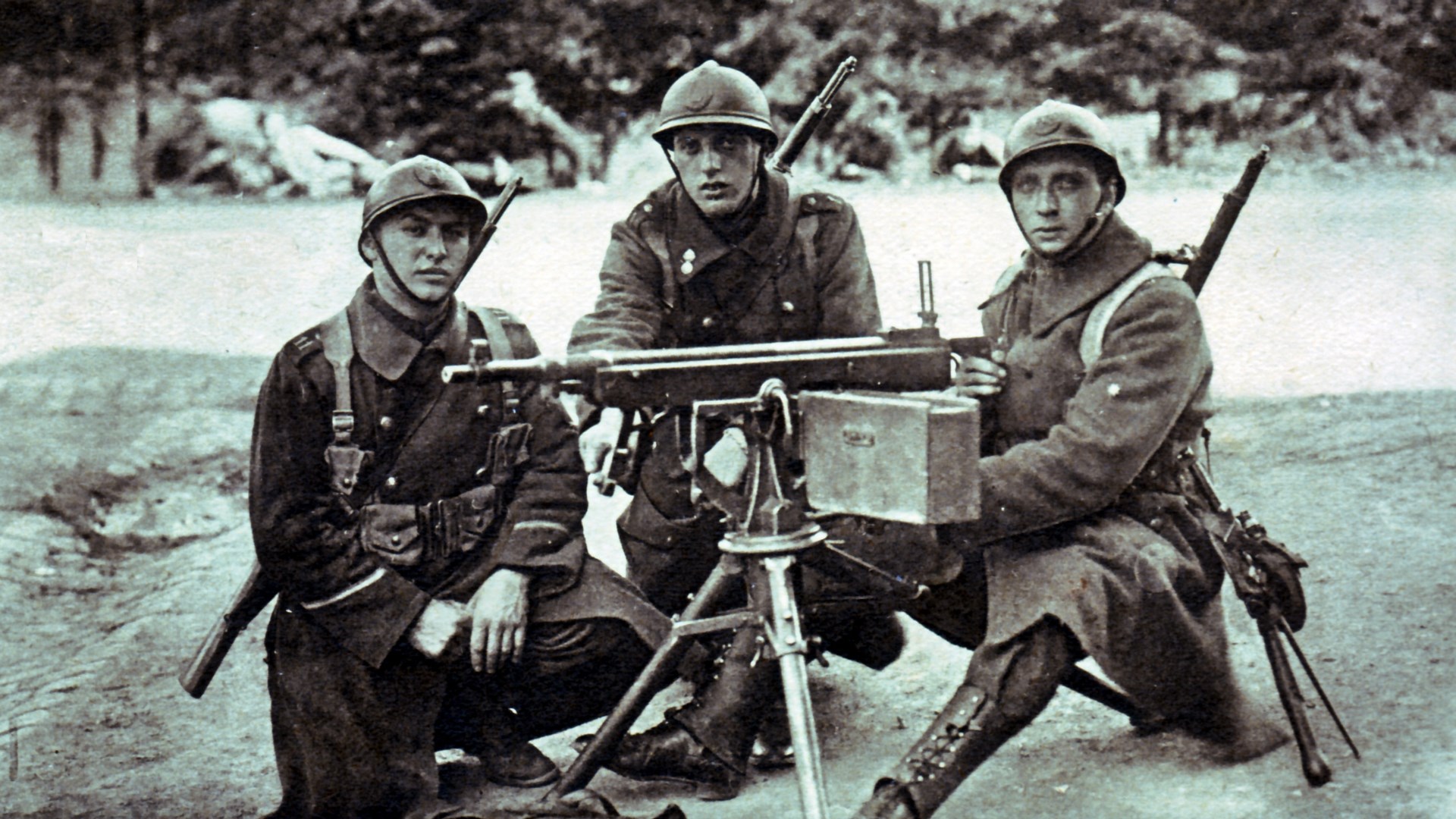 M1895 in Belgian service during World War I. Photograph from author’s collection.
M1895 in Belgian service during World War I. Photograph from author’s collection.
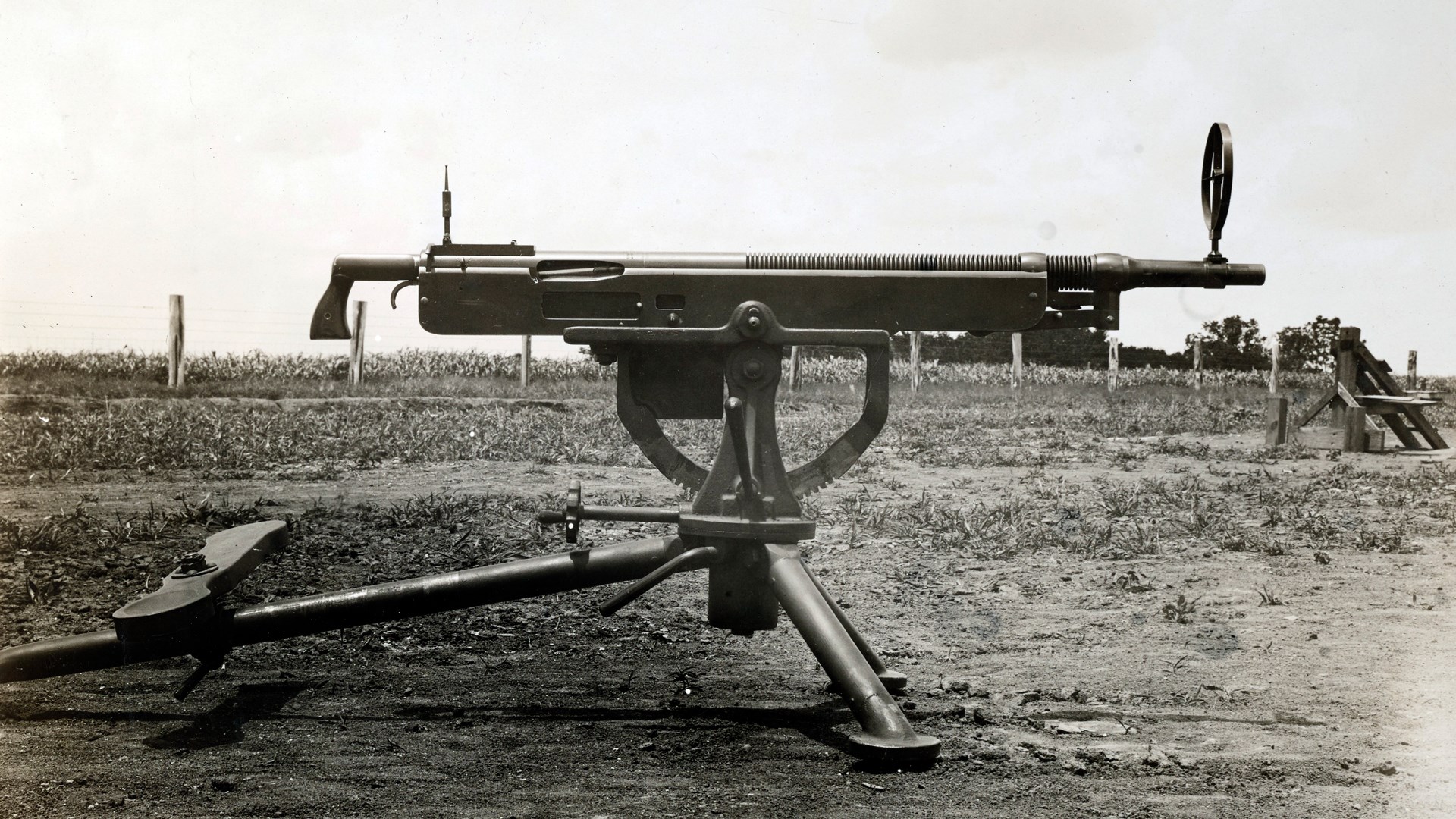 The potato-digger in training at Fort Lewis, Wash., during 1918. National Archives photograph.
The potato-digger in training at Fort Lewis, Wash., during 1918. National Archives photograph.
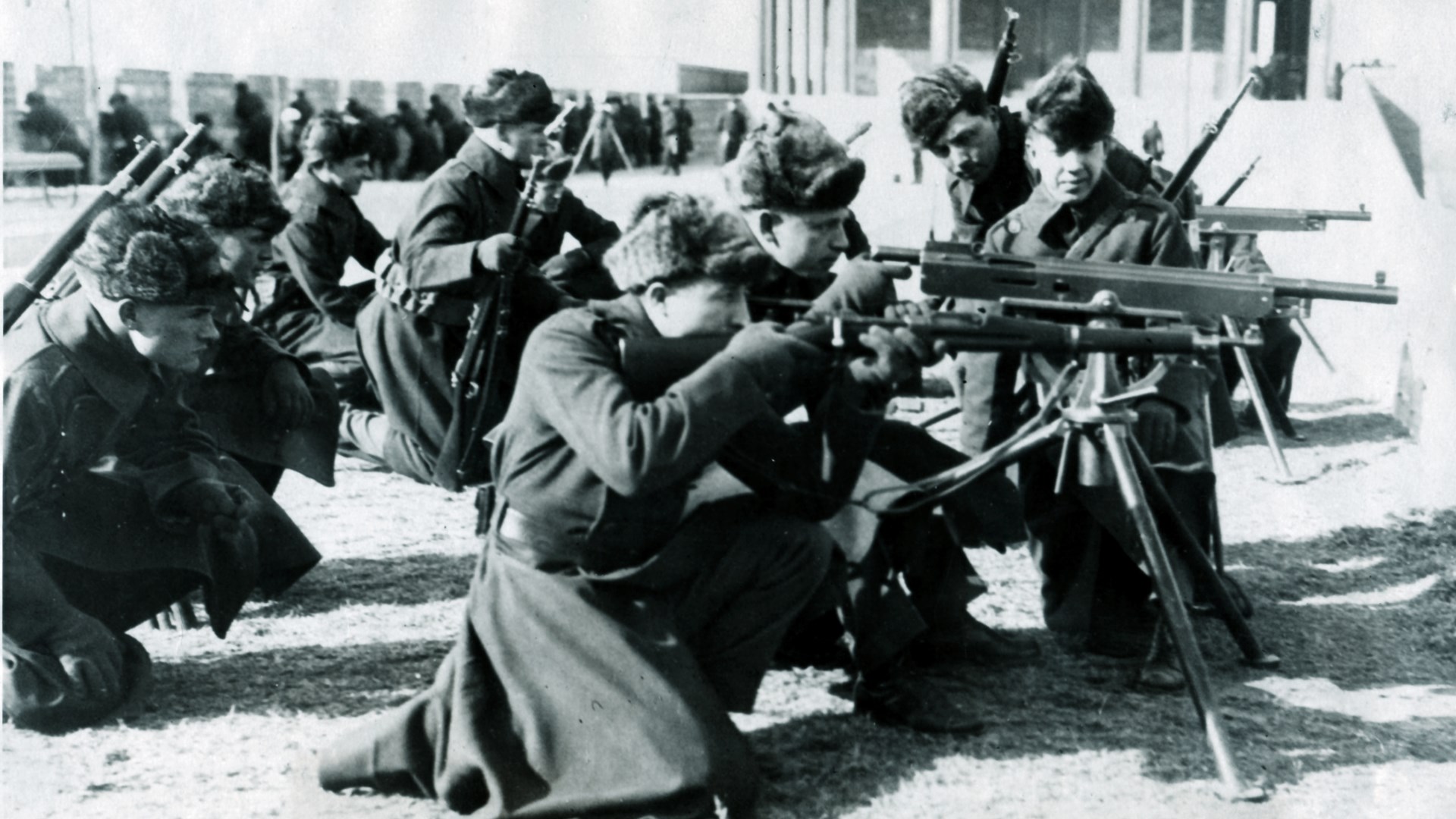 An aged M1895 serving with the USMC at Hankow, China, during December 1926. Photograph from author’s collection.
An aged M1895 serving with the USMC at Hankow, China, during December 1926. Photograph from author’s collection.

Lot of innovation in the early part of the 20th century. We still had a frontier and other ways to test the metal of a man. Not so much by the 21st though. Still all in all a good time to be alive.
ReplyDelete